













The magazine of the art-form of the photo-essay
“A free, really high quality photo-essay magazine. Fabulous!”
Stephen Fry. British actor, writer and film & documentary maker

Jan 2015 back issue


by Jessica McGlothlin

Montana, the land of the big sky, is often thought of in terms of cowboys and cattle, mountains and great rivers. It’s a
land of romance, a land of seemingly endless summer days and long, frigid winter nights. And, while many idealist
views of the world vanish when one puts boots on the ground at the actual location, Montana still manages to hold
true to its rumoured grittiness.
Located at the North entrance to Yellowstone National Park, Gardiner, Montana, is home to an estimated 875 residents
-a legitimate town by Western standards. In the summer, cowboys and cowgirls from the local ranches gather at a
roughshod dirt arena overlooking the harsh hills of the north end of America’s first national park to test their ranch skills
in a series of rodeo events.
While the resulting rodeo is a spectacle, tourists from around the globe gather to enjoy; the competitors are in it for the
money. For many, the rodeo circuit is a way of life, a way of paying the bills. The mundane events of their day-to-day
ranch routine become a once-in-a-lifetime event for tourists. Rodeos are a common occurrence in the American West,
but due to the high visitor load in Yellowstone, the Gardiner Rodeo is arguably the only small town rodeo where one
can hear five-plus languages being spoken in the general vicinity.
The rodeo season is short in the north, and therefore the summer is filled with hard, fast action. The events pass by in
flashes of colour, the riders and their mounts a mere blur in the muddy dirt of the arena. Horses neigh, bulls stomp and
shift restlessly in the chutes, and young riders show their friends the latest horseback tricks they’ve learned.
It’s a mix of heritage and future, a look at Montana’s past and the ever-changing tourism that Yellowstone brings to the
region. But perhaps most of all, it’s mud on boots, the jangle of a horse’s bit and the laughter of two cowboys after
winning the calf roping event.
It is Montana.
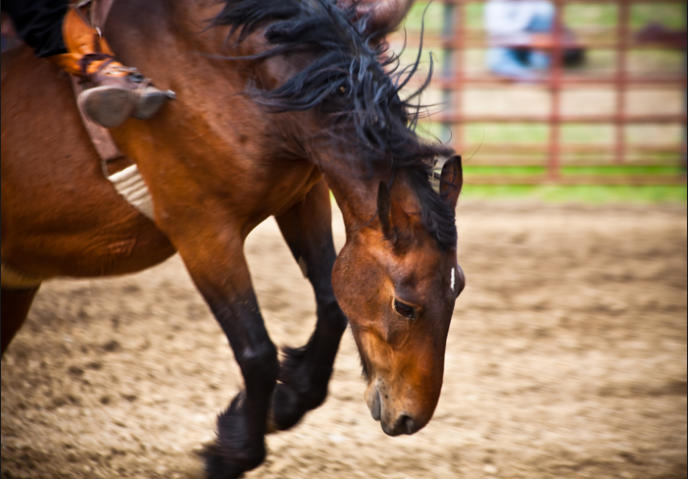
Rough stock horses are bred to do what they do best - buck. At the Gardiner Rodeo, it is rare for riders to stay on for
the required eight seconds.
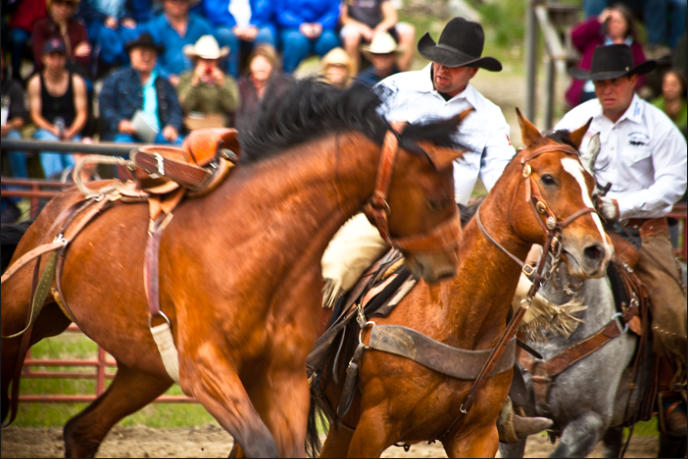
Pickup riders are well respected in the rodeo community. Charged with ensuring bronc and bull riders safely leave their
mounts and, if at all possible, are able to walk out of the arena, rough stock riders often refer to the brave men as
angels.
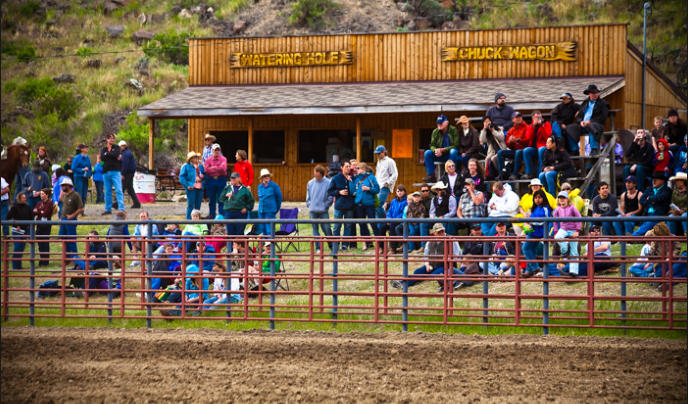
The spectator crowd is made up of men, women, and children from around the world. The locals back their pickup
trucks next to the arena, relaxing in dirty jeans and boots while watching the “tourist hatch” as much as the competition.
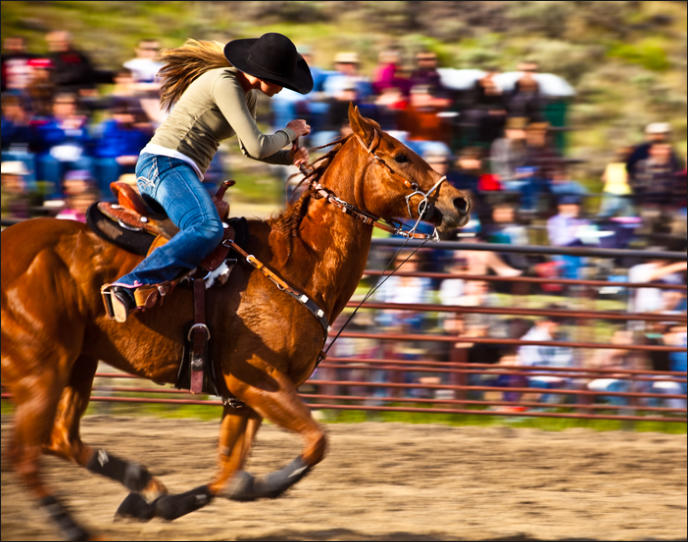
Impulsion - the drive to move forward - is crucial for barrel racing competitors, and the difference between a winning
round and going home empty handed.
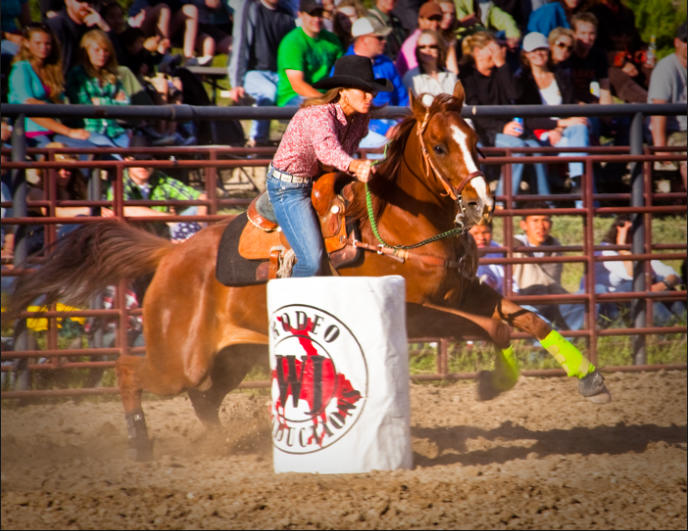
Competitors must carefully plot their arrival and subsequent turning around a barrel, forming what is referred to as a
‘pocket’ as they loop around the drum and continue on to the next.
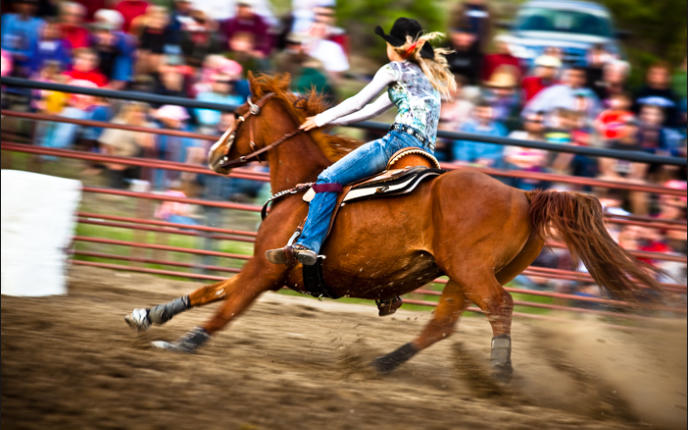
For the young men and women of the surrounding ranches, the rodeo is the crux of their social calendar. For every
roughshod old cowboy, there is a young cowgirl dressed in a new blouse and fresh makeup, hoping to catch the eye of
that tall roper down the way.
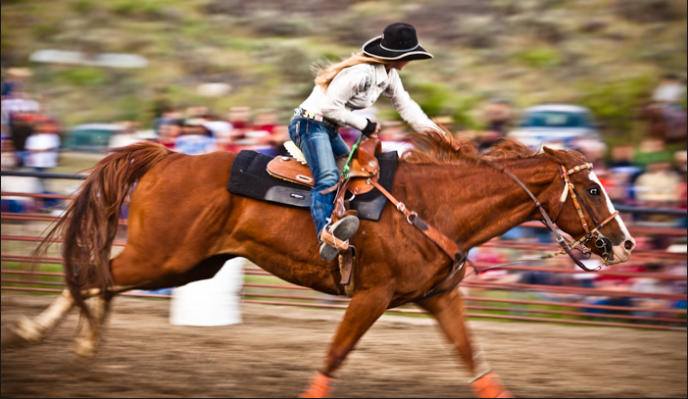
Communication between horse and rider is crucial for success, as demonstrated by this blue-eyed mount’s ears
swivelled back, listening to its rider.
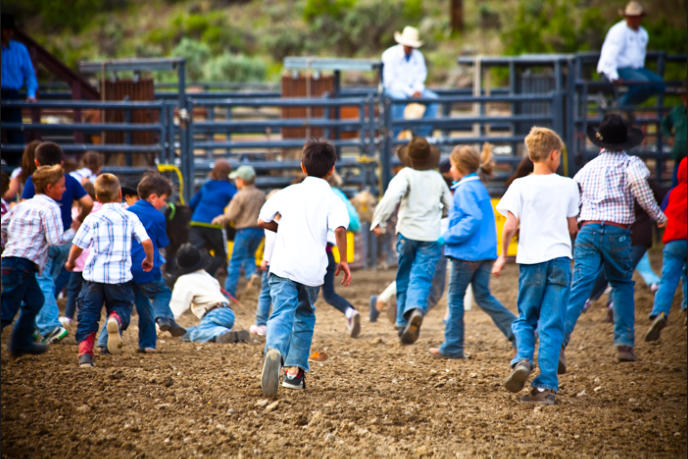
The mutton chase is the highlight for the youngest generation. Midway through the events, a small collection of sheep
are released into the arena, and young children can chase and try to capture the sheep. The children see it as a game;
parents see it as training for a future of chasing down errant calves.
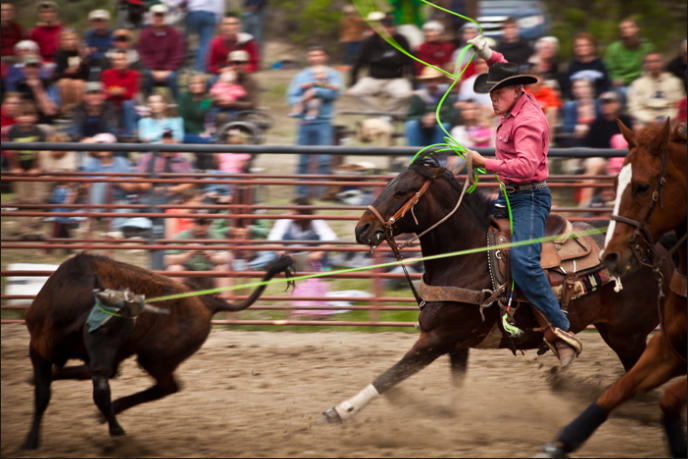
Team roping requires the skilful application of two riders - a header and a heeler. Both are armed with ropes, and must
each capture their respective end of the calf with lightning speed and accuracy. If either rider misses, the team is not
scored.
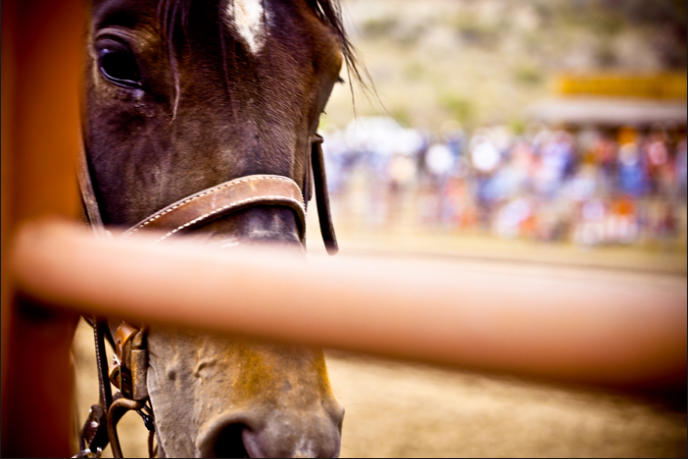
The watcher. A pickup man’s horse—arguably the most steadfast, intelligent horse in the rodeo—patiently waits for the
action to resume.
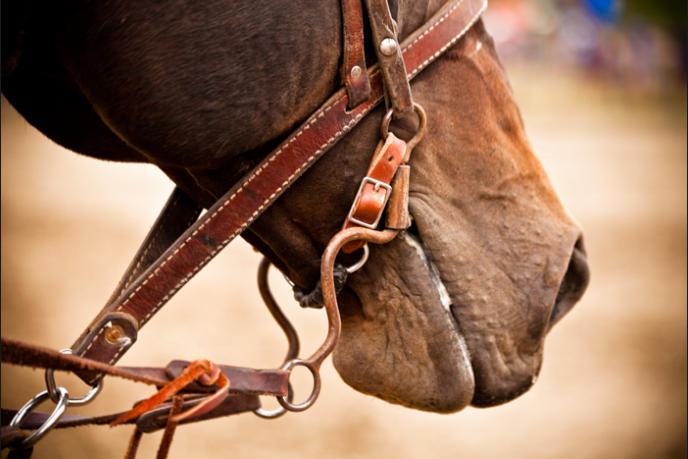
Saddlery is hard used, but taken care of to ensure full functionality both at the rodeo and at home on the ranch.
A broken strip of leather can spell disaster for both horse and rider.
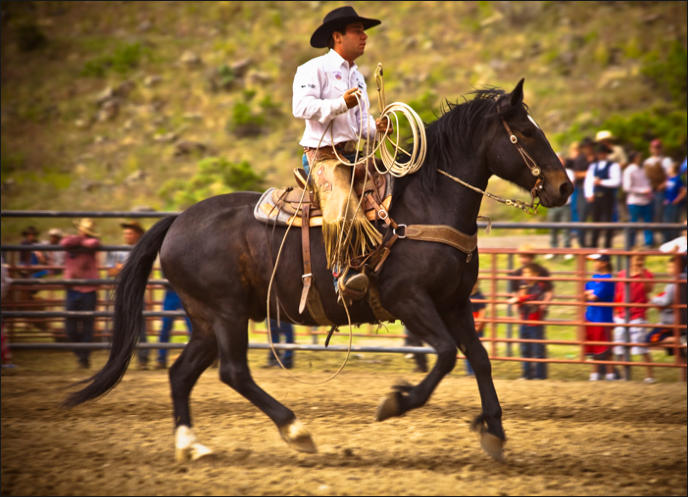
The rough stock riders’ hero. Pickup men are charged with pulling riders from the backs of broncos and bulls, then
safely seeing them to the ground. It’s a life-or-death job, and one that earns the men full respect from all competitors.
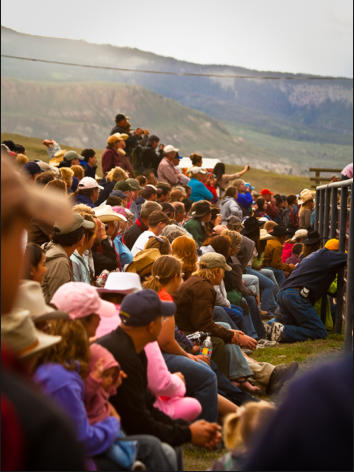
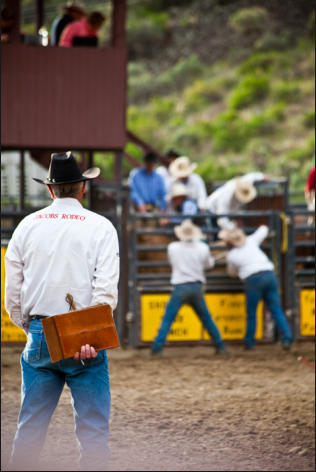
While the locals gather on the other side of the arena,
tourists pack the grandstands, happy to watch from a safe
distance.
Rough stock judges grade rides based on style, skill
and aptitude. A rider must remain on the mount for a
minimum of eight seconds to be scored.
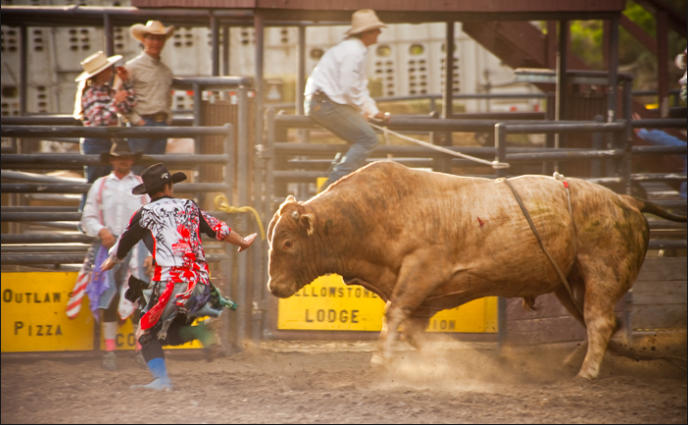
Rodeo clowns are masters of subterfuge. While they entertain the crowd and wear comical clothes, they are in fact
charged with ensuring bull riders are not gored by the angered animals. It’s a sombre job, disguised under grease
paint and a garish wig.
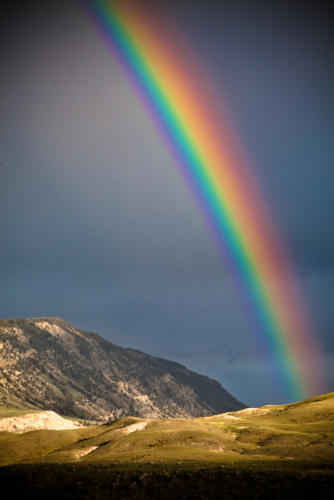
Late spring showers cross the northern reaches of
Yellowstone National Park, providing the perfect
landscape for the ideal western event.












